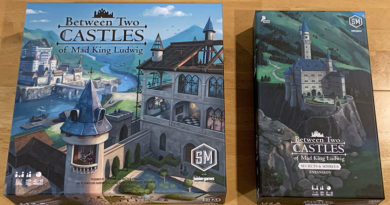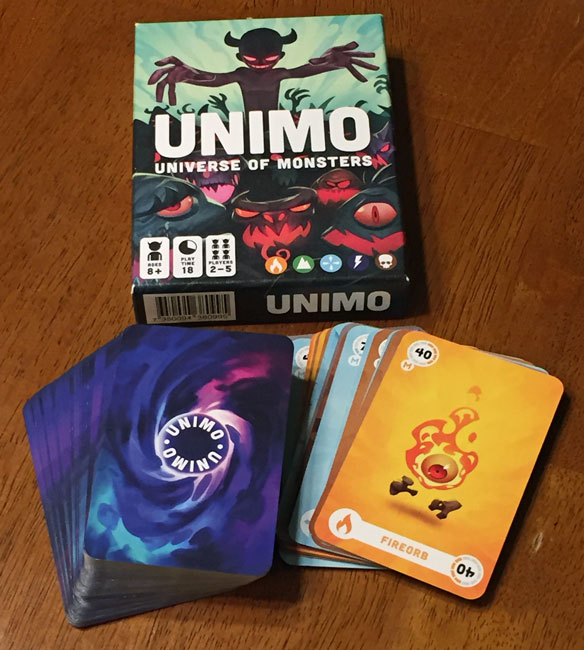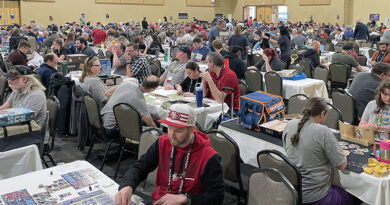Play the villain in Star Wars Villainous
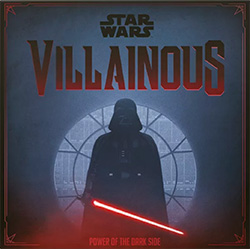
I’m currently watching Andor on Disney+ and loving it.
With Disney pumping out more and more Star Wars shows (The Mandalorian, Obi-Wan Kenobi, Tales of the Jedi, The Book of Boba Fett, and much more) it’s no wonder Ravensburger recently released Star Wars Villainous: Power of the Dark Side.
Designed with a similar premise to the popular game Disney Villainous, players take on the roles of popular villains to achieve their nefarious goals before their opponents reach theirs.
Only this time, players get to be their favorite Star Wars villains in Star Wars Villainous!
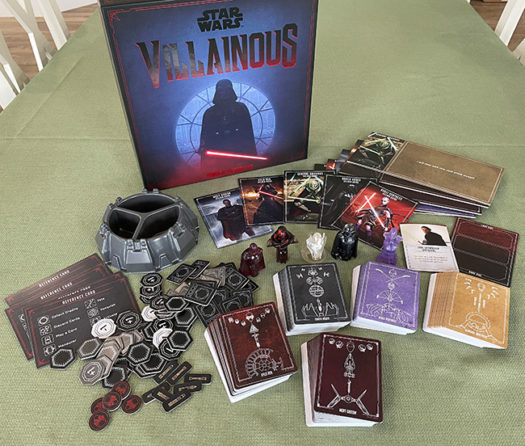
How to play Star Wars Villainous
As the name of the game implies, Star Wars Villainous has the same basic goal and game flow as Disney Villainous. Each player takes on the role of a different Star Wars Villain with their unique objectives to achieve. Likewise, each villain has their own villain board, villain card deck, hero card deck, villain guide, and villain mover – each of which are completely themed for that villain’s story.
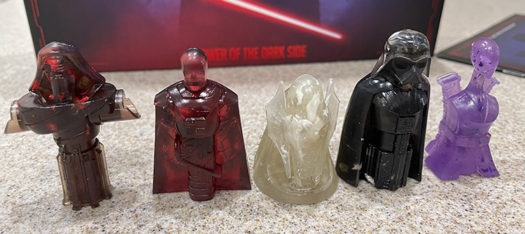
The 5 villains to choose from in the game are:
- Darth Vader
- Kylo Ren
- General Grievous
- Moff Gideon
- Asajj Ventress
To begin, each player shuffles their villain deck and draws 4 cards for their starting hand. They also shuffle their hero deck and place it next to their villain sector board. Each villain also has additional set up instructions that correspond with their unique story. For example, Kylo Ren has 6 destiny tokens and a destiny tracker board that relate to his game objective.
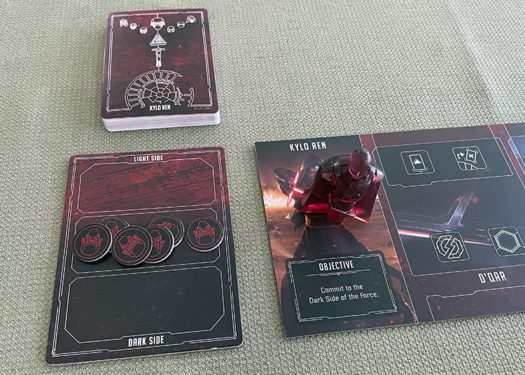
These instructions are detailed in the villain’s guide as well as detailed information about their game objective and special cards in their decks.
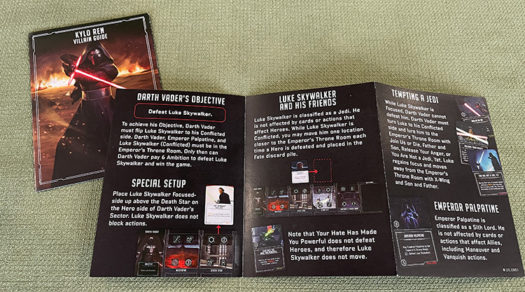
Once players share what their villain’s objectives are for the game, it’s time to play.
On a player’s turn, they do 4 things:
- Gain 1 Ambition token.
- Move their villain piece to a location in their on their sector board.
- Perform actions corresponding to the icons in that sector.
- Draw back up to 4 cards in hand.
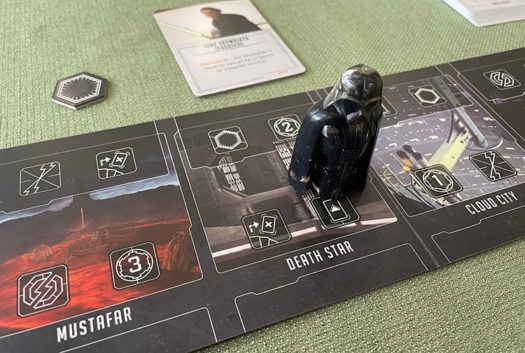
The crux of the game is centered on the actions players perform as they move to different sectors of their board and through actions on the cards they put into play. The various actions are:
- Collect Credits – Credits are essentially currency in the game as they’re spent to put cards into play.
- Collect Ambition – Some cards require spending Ambition tokens instead of Credits.
- Play a Card – Pay the credit cost listed on the card to play it. Ally and Item cards are played to sector locations. The card does not need to be played to the location the villain is on. Vehicles are played to the Deep Space section of the villain board.
- Maneuver – Move a card already in play on the bottom side of the board (where villain cards are played) to a new location.
- Discard Cards – Discard as many cards as desired. Players still only draw back up to 4 cards at the end of their turn.
- Activate a Card – Choose one card in play with an activate symbol and pay the cost to perform that action.
- Vanquish – Defeat one character (typically a Hero card on the top side of the sector board) by using one or more Allies at that same location. The Ally or Allies must have strength equal to or greater than the Hero. Allies used and the Hero are discarded to their respective deck discard piles.
- Fate – Disrupt an opponent’s progress by revealing 2 cards from that villain’s Fate deck and choosing 1 to play. The player performing the Fate action determines how to use the ability and chooses the outcome of any choice presented on the card. If the card is a Hero card, it’s played to a location at the top of the sector board – covering up the top icons on that opponent’s location (so those actions can’t be used until the hero is vanquished).
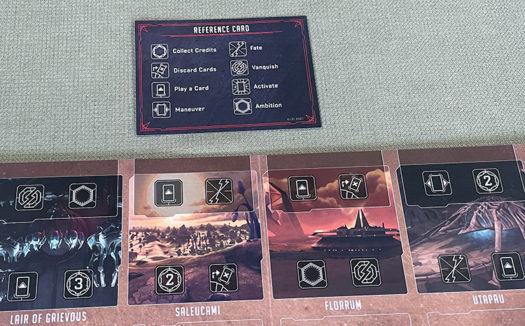
As you might expect, the various cards in villain and fate decks will add all sorts of new elements to the game play beyond these basic sector actions.
For example, players may gain Strength tokens which they can place on cards to give Allies and Heroes more or less strength than their cards indicate. There are also Effect and Condition cards that will impact the abilities of played Allies and Heroes.
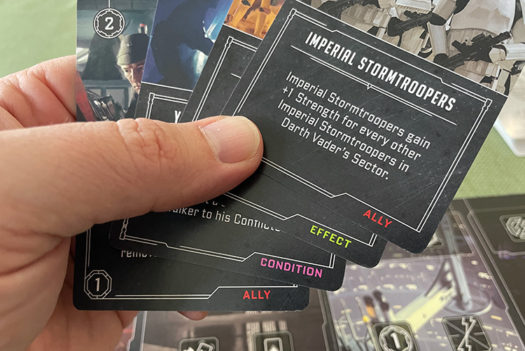
Since the Star Wars universe is vast and planetary systems are distant, one new addition to the Star Wars Villainous game is the use of Vehicles. Vehicle cards appear in both the villain and hero decks of every villain.
All vehicles are played to the Deep Space location in sectors. If an Ally vehicle is alone in Deep Space, it provides another location for the villain to travel to for performing actions. If only Hero vehicles are in a villain’s sector, that player’s hand limit is reduced by one card for each hero vehicle. If both an Ally and Hero vehicle are in the same Deep Space location, they are “engaged” in battle. Villains must use the Vanquish action to eliminate an engaged hero vehicle (in which case, they also remove their villain vehicle from that location).
Players continue taking turns, advancing toward their objective and trying to stop their opponents from achieving their objectives, until one player successfully completes their objective. That player is the winner!
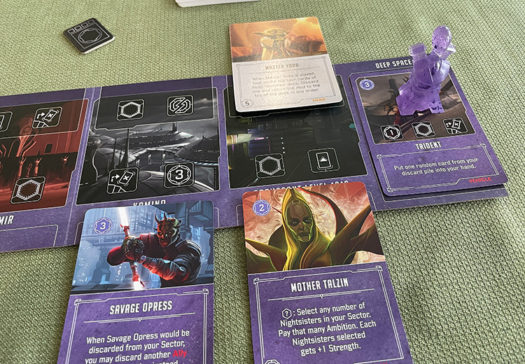
Can the whole family enjoy Star Wars Villainous?
Star Wars Villainous is a fun family board game if you like Star Wars. And according to the numbers, millions of people do.
It’s a lot of fun playing the side of Star Wars villains trying to carry out their plans. Each villain’s deck is so tailored to that villain’s storyline in the Star Wars universe that it’s easy to get pulled into the movies and shows while playing. The artwork is top notch and the actions on the cards tie in nicely to each setting as well – also pulling you further into the theme.
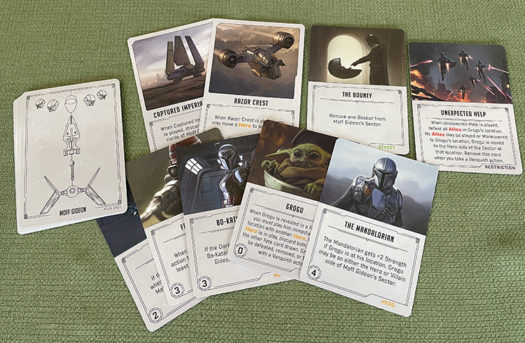
We also enjoy playing Fate cards on our opponents. It throws obstacles in their path in a few ways. For starters, if it’s a hero, it covers up 2 action icons on a location in their sector – giving them less options of what they can do on their next turn. If they want those actions freed up, it also requires them to take actions to defeat those heroes – which likewise slows down their progress.
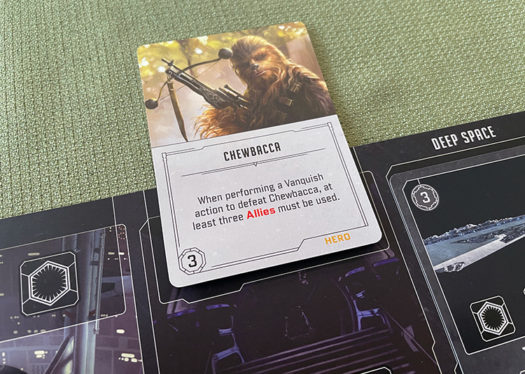
While the general flow of the game is the same as Disney Villainous, the villain objectives in Star Wars Villainous are a bit more involved. The addition of vehicles also adds another layer of complexity to the game. As such, we’d set the age recommendation a bit higher than with the Disney version.
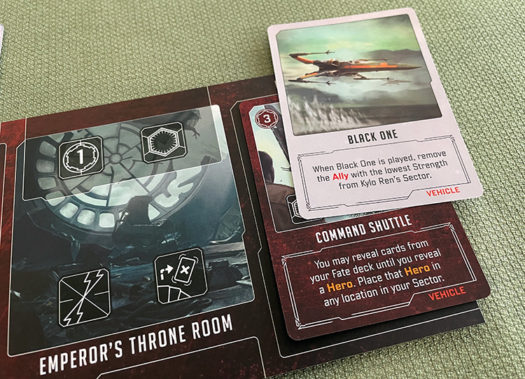
Disney Villainous also has the player count set at 2 to 6 players. But we found that playing with 6 players takes WAY too long. So we’re happy to see that Star Wars Villainous has the player count at just 2 to 4 players. With 5 villains in the base game, it means at least one villain will be left out of the mix each game. But we’re fine with that because we enjoy the villainous games most with 3 or 4 players anyway.
You may have noticed that I referred to this as the “base game” in that last paragraph. That’s because we fully expect there to be game expansions to come. So far, there are 5 expansions for Disney Villainous. And with more Star Wars villains out there, we’re looking forward to seeing what’s to come for Star Wars Villainous as well.
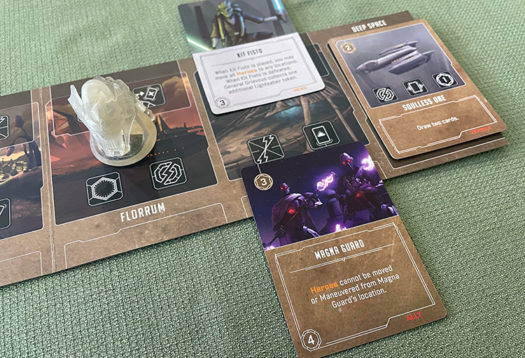
How does Star Wars Villainous score on our “Let’s Play Again” game meter?
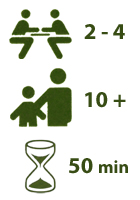 Star Wars Villainous scores well on our “let’s play again” game meter because of both the theme and the fun game play. There are many Star Wars themed games available (and we have plenty of them). But just having the theme isn’t enough. To get repeat plays, the game play itself has to be good. And that’s the case with Star Wars Villainous.
Star Wars Villainous scores well on our “let’s play again” game meter because of both the theme and the fun game play. There are many Star Wars themed games available (and we have plenty of them). But just having the theme isn’t enough. To get repeat plays, the game play itself has to be good. And that’s the case with Star Wars Villainous.
The unique objectives of each villain are engaging and it’s a challenging race to accomplish yours before your opponent villains reach theirs. Plus, with 5 villains to choose from, it’s fun playing as a different villain each time and figuring out how best to utilize their abilities to pull out a victory.
If you’ve got Star Wars fans in your family, we’d recommend grabbing a copy of Star Wars Villainous.



